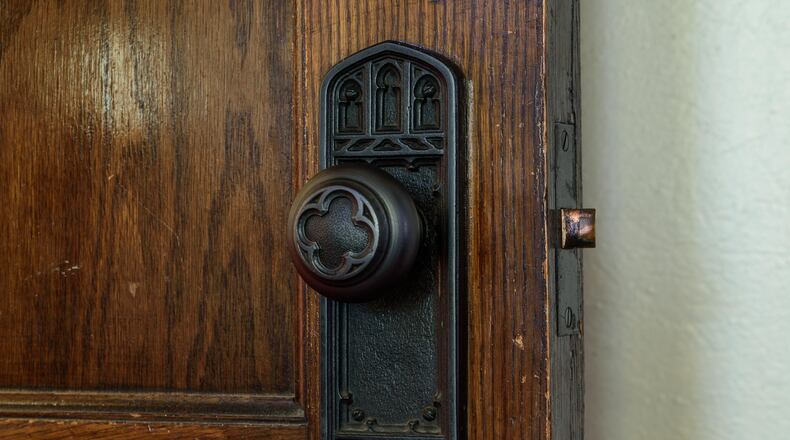“I am signing a binding document ... that unbinds us from one another,” said Bishop Gregory V. Palmer of the West Ohio Conference in a statement, commenting on the disaffiliation agreements more than 300 churches in this region have sought with United Methodist Church.
In June, the conference voted to allow disaffiliation for 172 congregations, of about 961 congregations in Western Ohio. Another 80 disaffiliated last year.
“Disaffiliation is a disappointing accommodation, and I wish it were not the case,” Palmer told the Dayton Daily News.
By today, Palmer expects the West Ohio Conference will be comprised of 613 local churches.
The United Methodist Church has been undergoing a slow schism over the course of the last few years. This year is likely to see “the peak” of church disaffiliations, according to the United Methodist News service, under a church law that became effective in 2019 and will expire at the end of 2023.
The rule, referred to within the United Methodist Church as the “Disaffiliation of Local Churches Over Issues Related to Human Sexuality,” allows congregations to leave the denomination but still maintain ownership of their church property. They have to meet certain conditions, including a two-thirds majority vote of the members of the congregation.
Many of these disaffiliations are also happening this year rather than earlier due to delays from the COVID-19 pandemic and negotiations over which side got to keep the name “United Methodist Church,” according to John S. A. Lomperis, United Methodist director at the Institute on Religion and Democracy, an ecumenical think tank that is separate from the United Methodist Church.
Many of the departing churches are joining the conservative Global Methodist Church, created last year. Other congregations have chosen to remain independent or join different denominations. Global Methodist Church doctrine states that human sexuality “is a gift of God” and should be exercised as “a loving and monogamous marriage between one man and one woman.”
“We’d like to see disaffiliations handled in as a fair and kind a way as possible,” Lomperis said.
The divide is about more than issues related to human sexuality, according to Lomperis, who says differing theologies over “who Jesus Christ is” are the top concerns with the churches that are leaving the United Methodist Church.
What is believed to be an expensive bureaucracy is another priority of those churches leaving the denomination, Lomperis said. Fees that churches pay to the United Methodist Church are higher than the fees churches pay to the Global Methodist Church, according to Lomperis.
The churches that have sought disaffiliation from the West Ohio Conference have been communicating that their primary concerns are in regard to issues on human sexuality, Palmer said.
“The whole challenge that we have faced in our denomination is around what is the place of gay and lesbian people in the United Methodist Church, particularly can non-celibate gay clergy be active in ministry and also should the United Methodist Church allow the ordination and deployment of openly gay pastors,” Palmer said. “That’s been the heart of the matter.”
The United Methodist Church does not allow for gay clergy members, Palmer said.
“The churches that have left have left the church they actually say they believe in—that holds the position they say they believe in,” Palmer said.
There are concerns that the United Methodist Church may change its stance on gay clergy, but Palmer said that was not something he could predict.
“I think there are people that have left who are concerned as whether or not the church will change its position going forward,” Palmer said. “That can only happen, at the technical level, at the General Conference of the United Methodist Church, which meets every four years.”
The opposing view says leaders are not being held to the official standards of the United Methodist Church.
“Officially, our rules say that we welcome all people into our churches, including members of the LGBTQ community, but that we have certain standards of behavior we expect of anybody who is set apart in leadership,” Lomperis said.
Those standards include “no sex outside of marriage, no involvement in pornography, and no having same-sex partners,” he said.
Those disaffiliating from the United Methodist Church feel they are sticking with the traditional stances of the Methodist denomination, according to Lomperis, who said a lot of the members of the church feel like the bureaucracy of the church has become increasingly “openly hostile to the official doctrinal moral stances that are still the official stances and certainly the historic stances of the church.”
Palmer oversees more than 500 clergy members, saying the General Conference has “healthy boundaries and expectations of clergy behavior” for clergy members that they sometimes violate.
Palmer anticipates there will be no additional churches seeking disaffiliation this year. Churches seeking disaffiliation would need approval from the West Ohio Conference, and Palmer is not planning to convene another special session of the conference this year.
“United Methodist Church is alive and well. This has been a distraction and has sapped energy that could have been going to do other things that are absolutely important work in the church, but people have the right to do it,” Palmer said. “...I had hoped that no one would feel the need to leave. We want the church to be open and hospitable to everyone that we can, so that people’s lives can be touched by the power of God and touched by the power of community.”
Staff Writer London Bishop contributed to this story
About the Author

